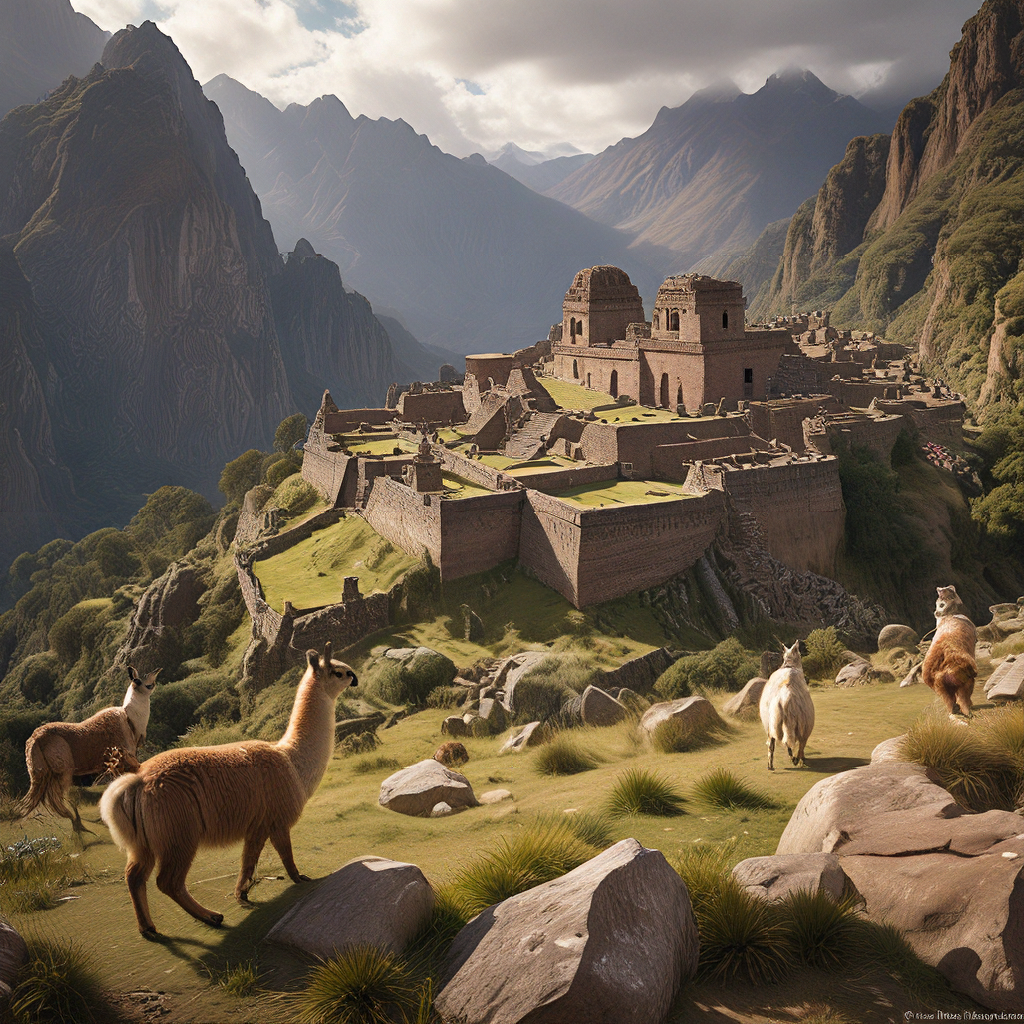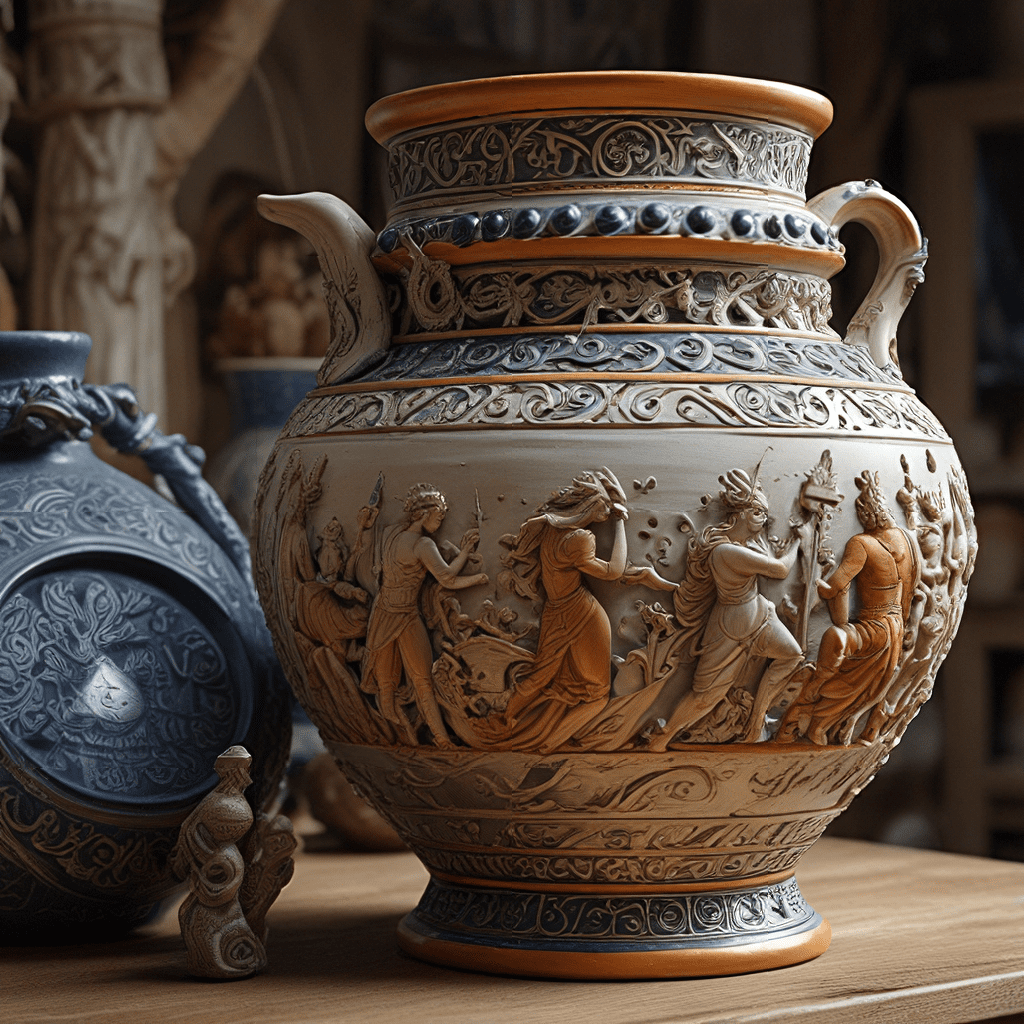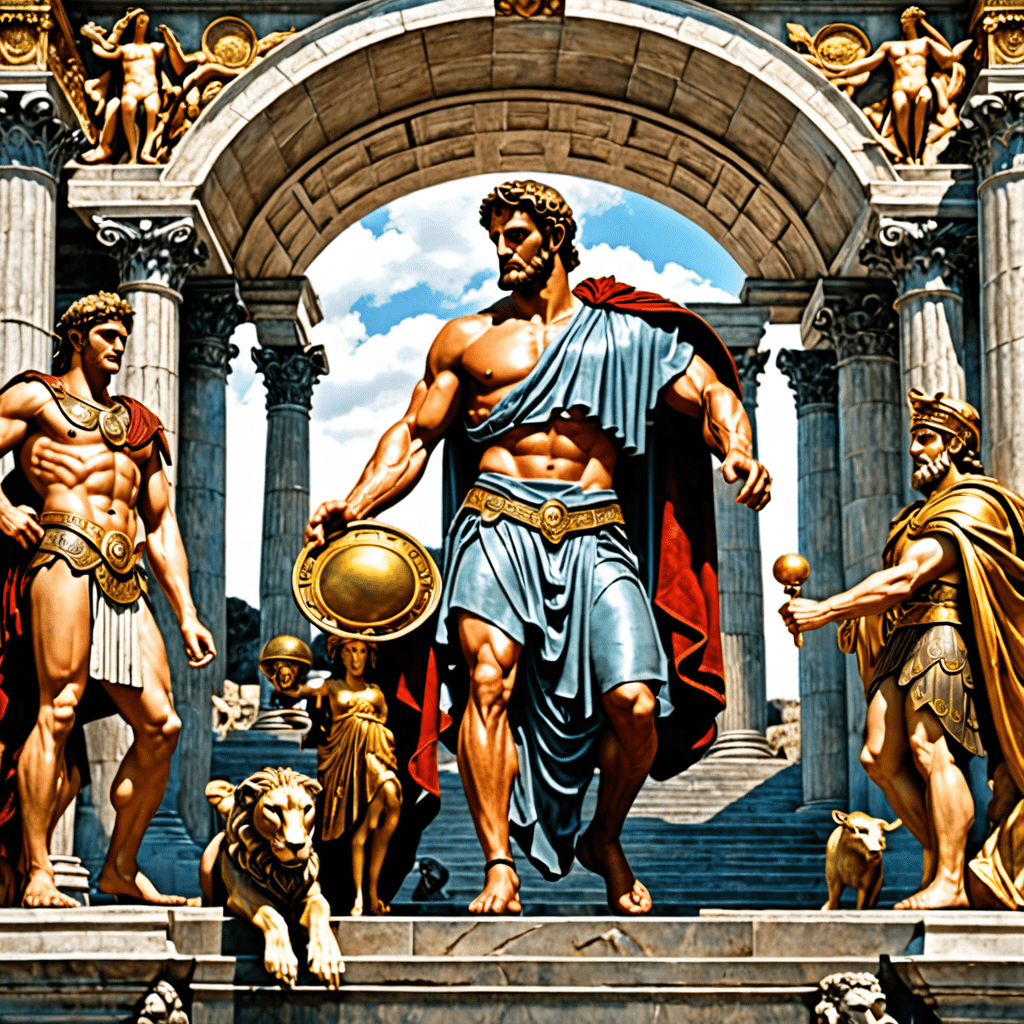The Incan Myth of the Temple of the Llama: Sanctuary of the Andes
The Incan Empire, which flourished in the Andes Mountains of South America from the 13th to the 16th century, was renowned for its advanced civilization, intricate social structures, and profound spiritual beliefs. At the heart of their culture lay a deep reverence for nature, symbolized by the majestic llama, a crucial animal for sustenance and transportation. The Incan myth of the Temple of the Llama, a sacred sanctuary dedicated to this revered creature, captures the essence of their spiritual connection to the natural world.
The Llama, a Sacred Animal in Incan Mythology
In Incan mythology, the llama held a position of great importance. This gentle, strong animal was not just a source of wool, meat, and transportation. The Incas believed llamas were a divine gift from the gods, representing the connection between the earthly realm and the celestial realm. They were often depicted in religious ceremonies, art, and even their architecture.
The llama's importance stemmed from its ability to navigate the harsh Andean terrain, reflecting the Inca's resilience as a people. Being a pack animal, the llama embodied the concept of community and cooperation, values deeply ingrained in Incan society. The llama's gentle nature, symbolic of peace and harmony, reflected the Incan desire for a balanced and righteous existence.
The Temple of the Llama: A Sanctuary Amidst the Andes
The Temple of the Llama, known in some accounts as the "Temple of the Sun Llama," was a sacred complex dedicated to this revered animal and the gods it represented. This sanctuary was believed to be located in the heart of the Andes, nestled amidst the towering peaks and breathtaking landscapes that inspired the Incan worldview.
This mystical place was not just a temple; it served as a refuge, a place of contemplation, and a sanctuary for the llamas themselves. The Temple of the Llama was believed to be a site where humans could connect with the divine and seek guidance from the spiritual realm.
The Legend of the Temple: A Story of Sacrifice and Divine Intervention
The legend surrounding the Temple of the Llama tells a story of sacrifice and divine intervention. It is said that an Incan emperor, known as Pachacuti, faced a devastating drought that threatened his kingdom. In desperation, he sought guidance from the Oracle of the Sun, a priestess entrusted with interpreting the will of the gods.
The Oracle revealed that the drought was a punishment from the Sun God for the disrespect shown to the llamas. She instructed the emperor to build a grand temple dedicated to the llamas and to offer a ceremonial sacrifice of a pure white llama. Pachacuti, believing in the Oracle's wisdom, followed her instructions, and with the temple built and the sacrifice performed, the heavens opened, sending rain upon the parched land. The drought ended, and the kingdom was saved.
The Temple’s Location: A Mystery Lost to Time
While the legend of the Temple of the Llama is deeply rooted in Incan lore, the exact location of this sacred site remains shrouded in mystery. The Spanish conquistadors, who arrived in the Andes in the 16th century, destroyed much of the Incan civilization, including their temples and records. This destruction, coupled with the Incas' practice of keeping their sacred knowledge secret, has made it challenging to pinpoint the Temple of the Llama's location.
Some scholars believe that the temple might have been located in the Cusco Valley, the heart of the Incan Empire, while others suggest it was in the Vilcabamba region, the last stronghold of the Incan resistance. However, the exact location remains elusive, a puzzle waiting to be solved by historians and archaeologists.
Theories of the Temple’s Purpose: A Place of Worship, a Royal Residence, or Both?
The purpose of the Temple of the Llama is another source of debate among researchers. Some believe it served solely as a place of worship, a sanctuary for the veneration of the llama and the deities it embodied. Others theorize that the temple was a royal residence, a testament to the Incan emperor's connection to the divine and the sacred animal.
It is possible that the temple functioned as both a place of worship and a royal residence, incorporating elements of both spiritual and political power. The temple's architecture and design, if discovered, could reveal more about its intended purpose and the significance it held within the Incan society.
The Role of Llamas in Incan Rituals and Daily Life
The llama held a prominent place in Incan rituals and daily life, reflecting its deep significance in their worldview. Llamas were integral to their agricultural practices, serving as pack animals to transport goods and supplies across the rugged Andean terrain. Their wool was used to create warm clothing, blankets, and textiles, providing protection from the harsh mountain climate. The llama's meat provided sustenance, while its dung was used as a valuable fertilizer.
Beyond their practical uses, llamas played a crucial role in Incan religious ceremonies. They were believed to be intermediaries between humans and the gods, offering a pathway for communication and offerings. Incan priests would use llama sacrifices to appease the gods, seek guidance, or ensure a good harvest. The llama's gentle nature was seen as a symbol of peace and harmony, making it a fitting offering for their benevolent deities.
The Temple’s Significance in Incan Cosmology
The Temple of the Llama, as a sanctuary dedicated to this sacred creature, had a profound significance in Incan cosmology. The Incas believed their world was structured as a vast three-tiered universe, with the upper world representing the divine realm, the lower world representing the underworld, and the middle world representing the earthly realm.
The llama, as a creature that could navigate both the lofty mountain peaks and the valleys below, symbolized the connection between these three worlds. The Temple of the Llama served as a physical manifestation of this connection, a place where humans could connect with the divine and seek balance within the cosmic order.
Evidence Supporting the Existence of the Temple: Archaeological Findings and Folklore
Despite the limited physical evidence, several clues suggest the Temple of the Llama's existence. Archaeological findings in the Cusco Valley, the heart of the Incan Empire, have unearthed temple complexes containing images of llamas and signs of sacrificial offerings. The presence of llama motifs in Incan art and architecture further supports the notion that the llama held a prominent place in their religious practices.
Furthermore, oral traditions and folklore passed down through generations provide additional evidence. Indigenous communities in the Andes still tell stories about a sacred temple dedicated to the llama, where humans sought guidance from the divine. These stories, while steeped in myth and legend, offer valuable insight into the Incan worldview and the importance of the llama in their lives.
The Temple’s Influence on Later Andean Cultures
The legend of the Temple of the Llama resonated throughout the Andean region, influencing the beliefs and practices of later cultures. The veneration of the llama as a sacred animal persisted in many Andean societies, signifying its enduring impact. The story of the Temple of the Llama serves as a reminder of the enduring connection between humans and the natural world, a theme that continues to resonate in the Andean cultures of today.
The Temple of the Llama: A Legacy of Mystery and Spirituality
Despite the passage of time and the destruction of much of the Incan civilization, the myth of the Temple of the Llama remains a potent symbol of their spiritual beliefs. This sanctuary, dedicated to the revered llama, embodies the essence of the Incan worldview, their reverence for nature, and their yearning for harmony between the earthly and celestial realms. The Temple of the Llama, while shrouded in mystery, stands as a testament to the enduring power of mythology and its ability to transcend the boundaries of time and geography.
FAQ
Q: What was the Temple of the Llama?
A: The Temple of the Llama was a sacred complex dedicated to the llama, a revered animal in Incan mythology. It is believed to have been a place of worship, a sanctuary for the llamas themselves, and possibly a royal residence.
Q: Where was the Temple of the Llama located?
A: The exact location remains a mystery. Some scholars believe it was located in the Cusco Valley, but the exact location is unknown.
Q: What evidence supports the Temple of the Llama's existence?
A: Archaeological evidence, such as temple complexes containing llama images and signs of sacrifices, as well as accounts in folklore and indigenous stories, provide clues.
Q: What role did llamas play in Incan society?
A: Llamas were essential for transportation, wool, meat, and fertilizer, and they played a crucial role in their religious ceremonies.
Q: What is the significance of the Temple of the Llama in Incan cosmology?
A: The temple symbolized the connection between the earthly, underworld, and divine realms. It was believed to be a place where humans could connect with the divine and seek balance.
Q: What is the legacy of the Temple of the Llama?
A: The temple's legend continues to influence Andean cultures, highlighting the enduring connection between humans and the natural world.




